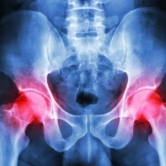Desk Job Getting You Down? You Can Still Be Active!
Get active with These 5 Tips! Sitting too much is simply hard on the body. Excessive sedentary behavior—common and seemingly “unavoidable” if you have a desk job—can increase the risk for back pain, neck pain, shoulder pain, and other types of work-related musculoskeletal injuries. How much time do you spend…




